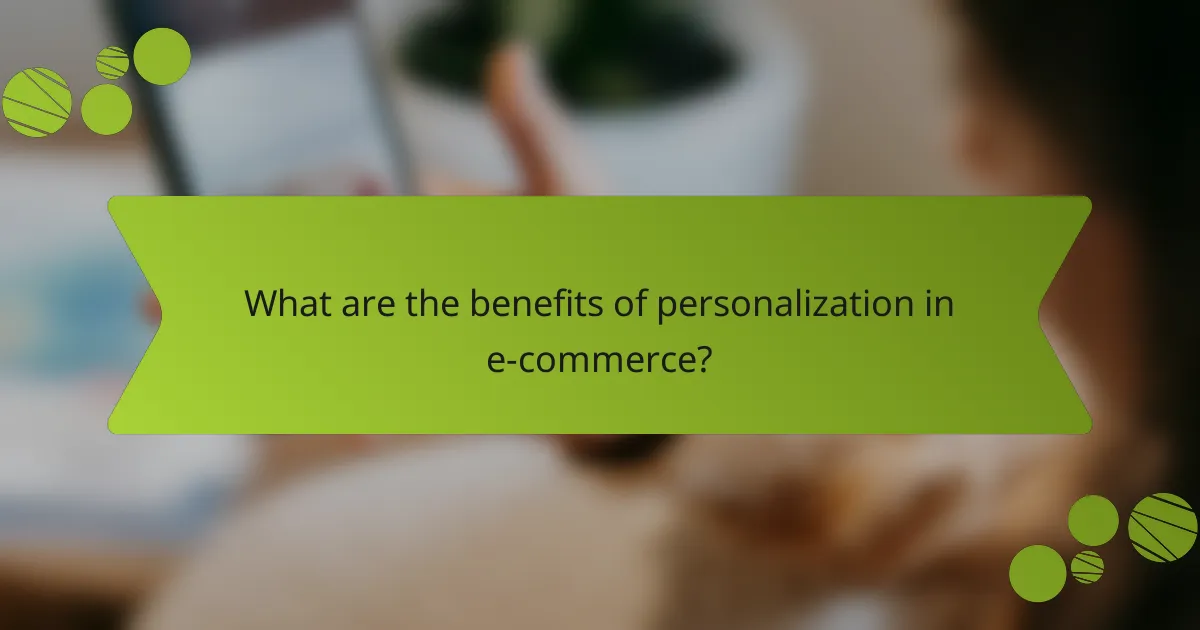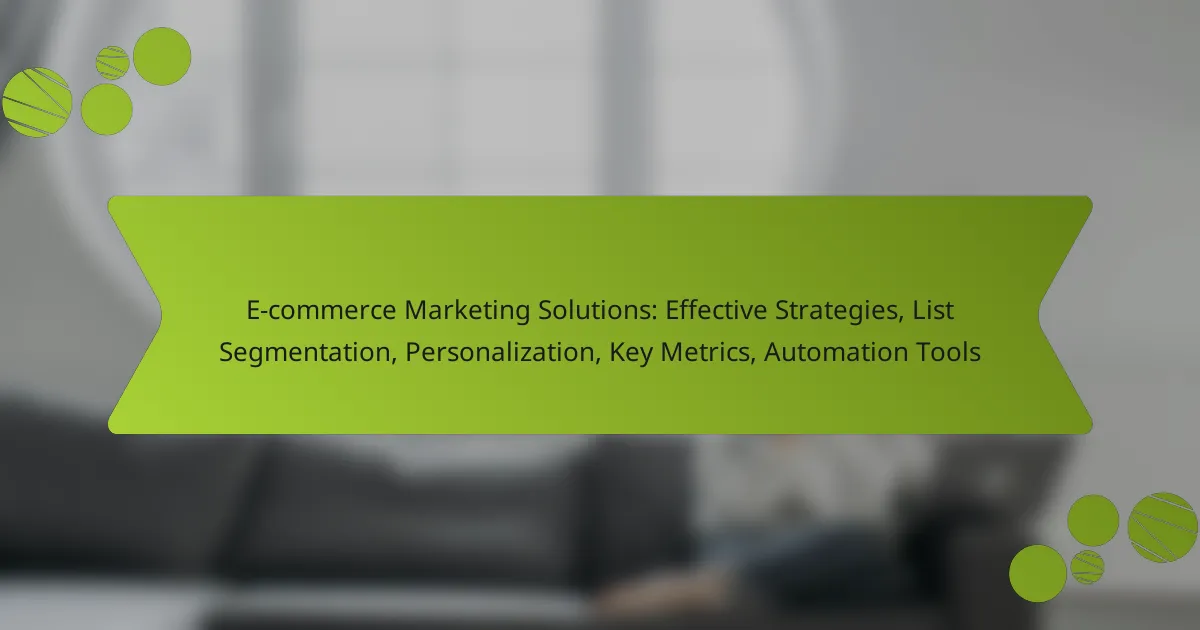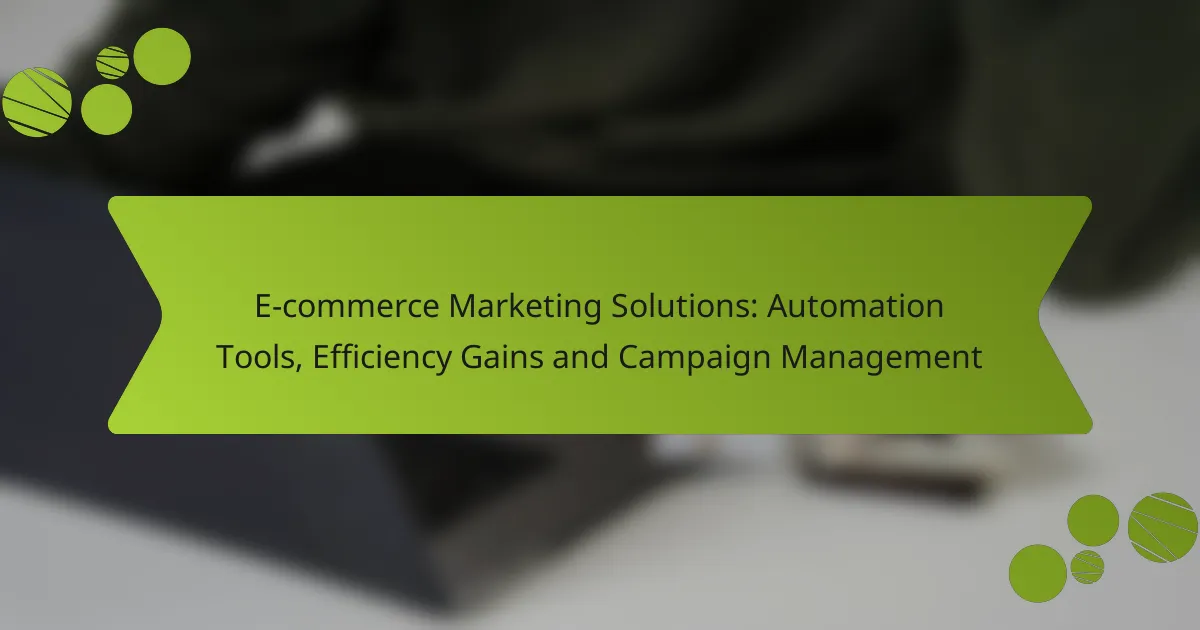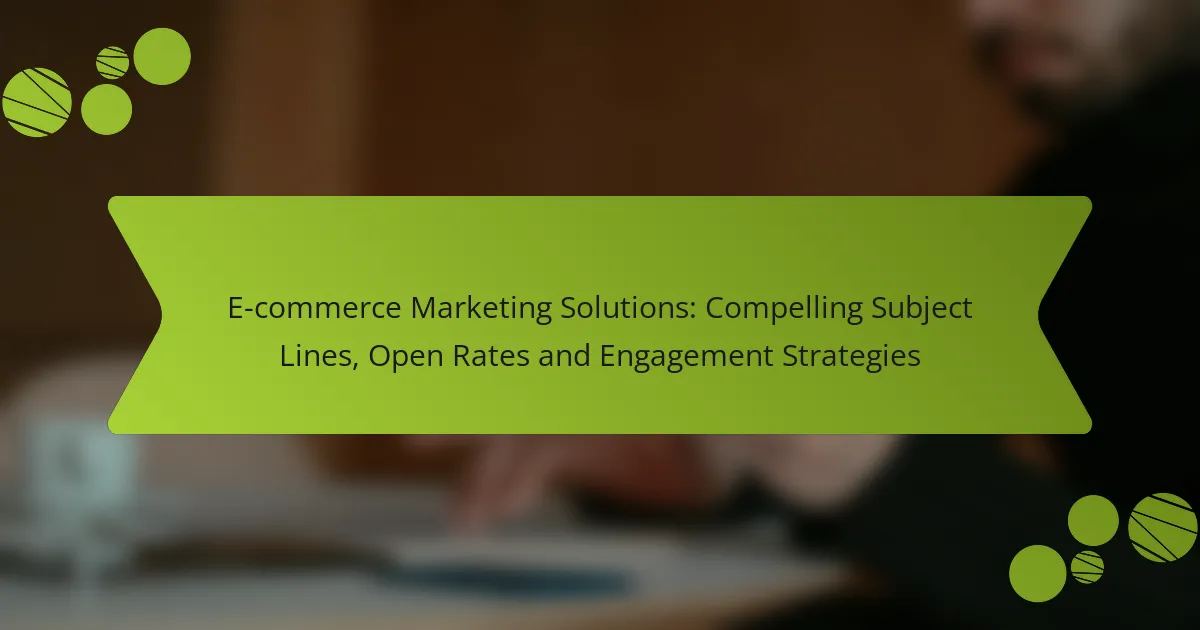E-commerce marketing solutions are vital for boosting traffic and sales through targeted strategies that engage customers and promote brand loyalty. By utilizing list segmentation, businesses can tailor their messages to specific audience groups, enhancing engagement and conversion rates. Additionally, personalization plays a crucial role in creating a satisfying shopping experience, driving sales, and nurturing long-term customer relationships.

What are effective e-commerce marketing strategies?
Effective e-commerce marketing strategies are essential for driving traffic and increasing sales. These strategies encompass various techniques that engage customers, promote products, and build brand loyalty.
Content marketing
Content marketing involves creating valuable and relevant content to attract and engage a target audience. This can include blog posts, videos, infographics, and guides that provide useful information related to your products. By establishing authority and trust, businesses can encourage potential customers to make purchases.
To implement content marketing effectively, focus on topics that resonate with your audience and optimize for search engines. Regularly update your content to keep it fresh and relevant, and consider using a content calendar to plan and track your efforts.
Social media advertising
Social media advertising allows businesses to reach a broad audience through targeted ads on platforms like Facebook, Instagram, and Twitter. These ads can be tailored based on user demographics, interests, and behaviors, making them highly effective for e-commerce marketing.
When creating social media ads, use eye-catching visuals and clear calls to action. Monitor performance metrics to adjust your strategy and optimize ad spending, aiming for a balance between reach and conversion rates.
Email marketing campaigns
Email marketing campaigns are a direct way to communicate with customers and promote products. By segmenting your email list, you can tailor messages to specific groups, increasing engagement and conversion rates.
To maximize the effectiveness of email campaigns, personalize your messages and include compelling subject lines. Regularly analyze open rates and click-through rates to refine your approach and avoid common pitfalls like sending too many emails, which can lead to unsubscribes.
Influencer partnerships
Influencer partnerships involve collaborating with individuals who have a significant following on social media or other platforms. These influencers can help promote your products to their audience, leveraging their credibility to drive sales.
Choose influencers whose values align with your brand and whose audience matches your target market. Track the performance of these partnerships through metrics like engagement and sales conversions to ensure a positive return on investment.
Search engine optimization
Search engine optimization (SEO) is the practice of enhancing your website to rank higher in search engine results. This involves optimizing content, improving site speed, and ensuring mobile-friendliness to attract organic traffic.
To effectively implement SEO, conduct keyword research to identify terms your potential customers are searching for. Regularly update your website with fresh content and monitor your search rankings to adapt your strategy as needed. Aim for a user-friendly experience to reduce bounce rates and improve conversions.

How can list segmentation improve marketing efforts?
List segmentation enhances marketing efforts by allowing businesses to tailor their messages to specific groups within their audience. By dividing a larger list into smaller, more targeted segments, marketers can increase engagement and conversion rates through personalized communication.
Demographic segmentation
Demographic segmentation involves categorizing your audience based on characteristics such as age, gender, income, and education level. This method helps marketers create targeted campaigns that resonate with specific demographic groups. For instance, a luxury brand may focus on high-income individuals, while a student discount campaign targets younger audiences.
To effectively implement demographic segmentation, gather data from customer profiles and surveys. Ensure that your messaging aligns with the values and preferences of each demographic segment to maximize impact.
Behavioral segmentation
Behavioral segmentation focuses on how customers interact with your brand, including their purchasing habits, product usage, and engagement levels. By analyzing behaviors, marketers can identify patterns and tailor their strategies accordingly. For example, frequent buyers may receive loyalty rewards, while occasional shoppers might get special offers to encourage more purchases.
Utilizing analytics tools can help track customer behavior and refine your segmentation. Be cautious not to overwhelm customers with too many messages; instead, focus on delivering relevant content that meets their specific needs.
Geographic segmentation
Geographic segmentation divides your audience based on their location, such as country, region, or city. This approach is particularly useful for businesses with location-specific products or services. For example, a retailer may promote winter clothing in colder regions while advertising summer apparel in warmer areas.
When implementing geographic segmentation, consider local customs, languages, and preferences. Tailoring your marketing efforts to reflect regional differences can significantly enhance customer engagement and satisfaction.

What are the benefits of personalization in e-commerce?
Personalization in e-commerce enhances the shopping experience by tailoring content and offers to individual customer preferences. This approach not only increases satisfaction but also drives sales and fosters long-term relationships with customers.
Increased customer engagement
Personalization boosts customer engagement by providing relevant product recommendations and content that resonates with individual shoppers. When customers see items that match their interests, they are more likely to interact with the brand, leading to longer browsing sessions and increased time spent on the site.
For example, using data analytics to track customer behavior can help identify which products to showcase on the homepage or in marketing emails. This targeted approach can significantly enhance user interaction and participation in promotions.
Higher conversion rates
Personalized experiences can lead to higher conversion rates by presenting customers with tailored offers that meet their specific needs. When shoppers receive recommendations based on their previous purchases or browsing history, they are more inclined to make a purchase.
Implementing strategies such as personalized email campaigns or dynamic website content can result in conversion rate increases of several percentage points. A/B testing different personalized approaches can help identify the most effective tactics for your audience.
Improved customer loyalty
Personalization fosters improved customer loyalty by creating a sense of connection and understanding between the brand and the consumer. When customers feel valued through tailored experiences, they are more likely to return for future purchases.
Offering loyalty programs that reward personalized shopping experiences, such as exclusive discounts or early access to sales, can further enhance this loyalty. Engaging customers with personalized follow-ups after purchases can also reinforce their positive feelings towards the brand.

What key metrics should be tracked in e-commerce marketing?
Key metrics in e-commerce marketing include customer acquisition cost, return on ad spend, customer lifetime value, and conversion rate. Tracking these metrics helps businesses assess their marketing effectiveness and optimize their strategies for better performance.
Customer acquisition cost
Customer acquisition cost (CAC) measures the total cost of acquiring a new customer, including marketing expenses and sales efforts. To calculate CAC, divide the total marketing and sales costs by the number of new customers gained during a specific period.
For example, if a company spends $1,000 on marketing and acquires 100 new customers, the CAC would be $10. Keeping CAC low is crucial for profitability, as high acquisition costs can erode margins.
Return on ad spend
Return on ad spend (ROAS) evaluates the revenue generated for every dollar spent on advertising. It is calculated by dividing total revenue from ads by the total ad spend. A ROAS of 4:1 means that for every dollar spent, four dollars in revenue are generated.
Businesses should aim for a ROAS that exceeds their advertising costs to ensure profitability. A common benchmark is a ROAS of at least 3:1, but this can vary by industry and campaign goals.
Customer lifetime value
Customer lifetime value (CLV) estimates the total revenue a business can expect from a customer over their entire relationship. To calculate CLV, multiply the average purchase value by the average purchase frequency and the average customer lifespan.
For instance, if a customer spends $100 per purchase, makes 5 purchases a year, and remains a customer for 3 years, the CLV would be $1,500. Understanding CLV helps businesses allocate resources effectively and tailor marketing strategies to retain high-value customers.
Conversion rate
The conversion rate measures the percentage of visitors who complete a desired action, such as making a purchase. It is calculated by dividing the number of conversions by the total number of visitors and multiplying by 100.
A typical e-commerce conversion rate ranges from 1% to 3%, though this can vary widely by industry. Improving conversion rates can be achieved through strategies like optimizing website design, enhancing product descriptions, and offering promotions.








